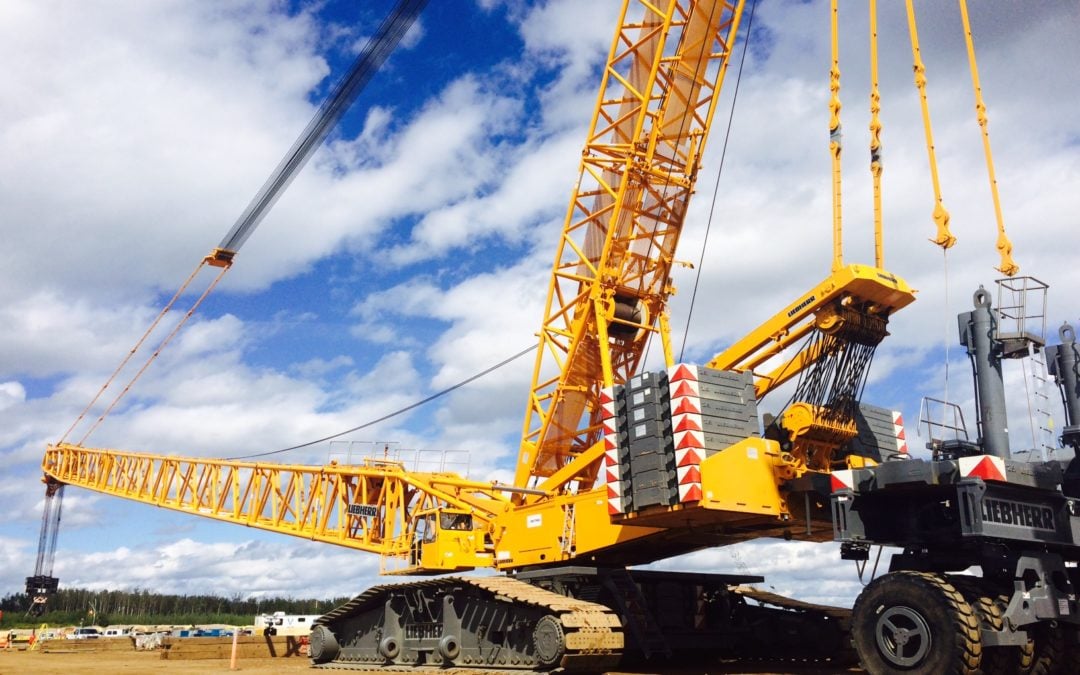
Quick response determines every outcome in emergency situations. During emergencies, mobile cranes help make passes needed for building collapse clearance and victim rescue to set up basic services. Mobile cranes help us achieve this task. These machines serve as essential tools for every emergency sector because they move quickly and work well in all conditions while lifting heavy weights. This piece of equipment is used more often today for fast-paced emergency rescue missions, although it primarily works in industrial settings.
Rapid Deployment to Emergency Sites
Because mobile cranes can be driven straight to emergency sites, they clearly add great value in these situations. These cranes have advantages over tower and stationary models since they can be driven or towed directly to the incident location. They can start lifting tasks only a few hours after receiving the emergency call, which helps speed up rescue operations. The fast speed of mobile cranes during emergency weather events and earthquakes impacts who survives and who does not. Rental companies simplify crane delivery to disaster zones through their fleet of emergency units that stand ready for deployment. The rapid response units are fully prepared to handle multiple lifting requirements because they come with all essential lifting equipment.
Supporting Urban Disaster Relief Efforts
The equipment used in urban emergencies must have special abilities to work in tight urban spaces. The special features of mobile cranes, including truck-mounted and all-terrain models, let them access and move through space-constrained urban streets. Their adjustable outriggers and extendable booms help the devices perform accurate lifting operations during disasters. First responders use mobile cranes to move fallen structures and stranded vehicles due to flooding, which helps them do their essential work better. Mobile crane rental services are often relied upon in such situations for quick deployment. Cranes are preferred because of their movement flexibility compared to bigger and less mobile machines. When cities face building density and traffic problems, a mobile crane's fast entry and exit becomes their most important asset.
Assisting in Search and Rescue Operations
Emergency teams must rescue trapped victims from both disaster areas and collapsed buildings before other rescue operations begin. Emergency personnel use mobile cranes to move away big debris objects such as vehicles and shipping containers so they can access blocked areas. These machines directly move away significant blockages from the ground level to make rescues happen. The emergency team must partner with crane operators to perform equipment movements according to established rescue guidelines at a controlled pace. Experienced crane operators working with industrial safety protections perform complex rescue tasks in a safer way. Rescue teams can reach dangerous spots using crane platforms that support both workers and evacuees.
Essential for Infrastructure Repair
When infrastructure structures fail, such as bridges or water lines, the ability to react quickly will return essential operations to normal. Mobile cranes help emergency teams install new parts while transporting materials and providing safety support to technicians in high positions. Their power to lift heavy loads enables them to handle large equipment parts such as girders, turbines, or transformers effortlessly. Heavy equipment machinery like mobile cranes enables utility companies and civil agencies to return services quickly after any system interruptions. During emergencies, every hour available helps the restoration efforts as mobile cranes perform their work quickly while maintaining safety standards and accurate procedures. Specialists use cranes together with drones and GPS to build accurate location maps that lead emergency work teams to trapped utility equipment.
Aiding in Industrial Accident Recovery
Industrial facilities and manufacturing plants have many dangerous equipment issues. Mobile cranes become essential when you need to shift heavy equipment damage as emergency crews need to secure structures before getting close. Worker safety requirements and hazardous areas motivate organizations to use mobile cranes that deliver exact and secure lifting results. They perform best at their assigned safe work areas, which makes them effective in emergency response tasks. The machines work under the supervision of both safety personnel and engineering specialists who monitor all crane movements. Both parties working in hazardous settings need good teamwork because their smallest misstep could bring extra safety risks or harm to operations.
The Role of Mobile Cranes in Post-Disaster Recovery
Following emergencies, mobile cranes stay actively involved in rebuilding efforts. They perform multiple tasks by taking apart damaged buildings plus setting up temporary locations, and creating foundations for rebuilding. Aside from immediate emergencies, mobile cranes rebuild temporary facilities for shelter restoration and power line installation following disasters that destroy infrastructure. The machines keep working for weeks or months after the first 48 hours, depending on how big the recovery project becomes. Mobile cranes become essential tools for rebuilding strength because they keep working throughout disaster recovery periods.
Overview
Though more invisible than other first responder teams, mobile cranes stay crucial for emergency support work. First responders place their trust in mobile cranes because these machines can move quickly and handle strong loads while dealing with tough emergency conditions. Improved emergency preparation at companies and cities will boost the number of mobile cranes used during crises. The machines stand by to provide relief as first responders face dangers to save others.
Comments on “How Mobile Cranes Help in Emergency Response Jobs”